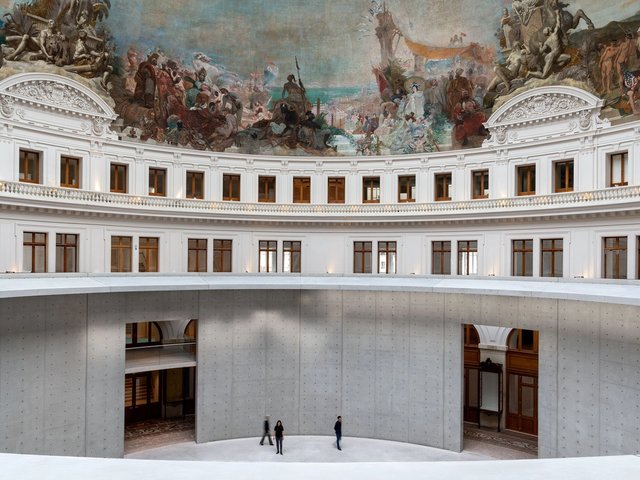French museums were dealt another blow yesterday evening when the government announced they must remain closed for a further three weeks, until 7 January, instead of opening on 15 December as previously anticipated.
Museums, along with theatres and cinemas, had planned to reopen next week at the end of France’s second lockdown. But as the number of new Covid-19 cases has not reached the 5,000 per day threshold set by the government—France had 14,595 contaminations yesterday and has lost a total of around 56,940 lives during the pandemic—more measures were introduced by Prime Minister Jean Castex.
After the lockdown ends, the public will be faced with a 8pm-6am curfew (with an exception on Christmas Eve), although they will be allowed to travel more than 20km and leave home without an “attestation” (a form allowing you to go out). Restaurants, bars, nightclubs and gyms will also remain closed until early January.
For museums and institutions, the prolonged closure means a further loss of revenue and, for some, entails postponing the opening of exhibitions once again.
The Conciergerie, a former Gothic palace and revolutionary prison in Paris that is now a national monument, had planned to open its exhibition En quête de liberté by El Anatsui next week. The Ghanian artist’s first exhibition in France was due to launch the Africa 2020 Season promoting African culture, which has been delayed several times.
The Maison Européenne de la Photographie (MEP) had similarly planned to open its exhibition Moriyama—Tomatsu: Tokyo, dedicated to the Japanese photographers Daido Moriyama and Shomei Tomatsu, next week. The installed exhibition had originally been scheduled for June, then November before the second lockdown came into effect.
“When [President Emmanuel Macron] said a few weeks ago that French people needed culture and that museums might be able to reopen on 15 December, we were actually quite surprised and thought that January would be more likely,” says Simon Baker, the director of MEP. “He did say that museums reopening was contingent on Covid-19 cases being below 5,000, so it was always a hope, not a promise, from the side of the government. Throughout this, I’ve been quite realistic and after seeing the way people have been behaving in shops the past few weeks, I had little optimism for being able to open next week. For morale reasons, though, we decided to go ahead with the installation rather than leave the MEP empty with nothing on the walls.”
Works in the Moriyama—Tomatsu: Tokyo exhibition have been transported directly from the studio of Moriyama and from Tomatsu’s widow, Yasuko Tomatsu, in Japan so Baker is not facing any loan issues. He is more concerned with the forthcoming Zanele Muholi exhibition, currently on show at Tate Modern in London, the dates and terms of which have already been renegotiated several times.
The MEP has been “massively affected” by the Covid-19 pandemic, Baker says. Its summer exhibition on the Austrian artist Erwin Wurm was attended by 37,000 visitors, around 40% less than normal, and was “way lower than we need to survive”, Baker adds.



